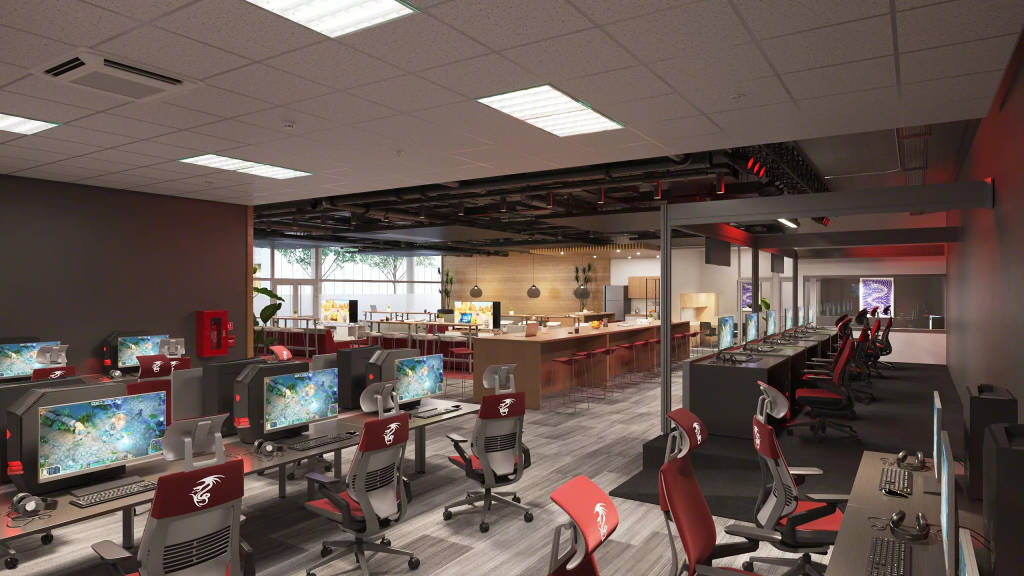We use cookies to make this site as useful as possible and maximize your experience. By closing this message, you consent to our cookies on this device in accordance with our cookie policy unless you have disabled them in your browser settings.
How bkm OfficeWorks is Supporting the World of eSports

More Than a Game: How bkm OfficeWorks is Supporting the World of eSports
The world is continuing to become more digital, including sports. In the last decade, the stereotypical idea of athletes has evolved. It no longer requires physical contact, as athletes move off the fields and into their chairs to compete in eSports.
eSports, also known as electronic gaming, is a form of competitive gaming. This phenomenon has captivated 3 billion gamers worldwide, and it shows no signs of letting up. It plays into the technology trend, allowing players to compete and socialize with users worldwide. In addition, it offers accessibility and inclusiveness while offering a wide array of games to appease all types of gamers.
There are many benefits to participating in eSports. It’s just like any other traditional sport. It allows players to socialize, build skills, and even offer professional opportunities. With eSports being on the rise, it’s expanding to other areas outside of recreational gaming.
Universities are bringing recognition to this new development for athletes. At least 175 Universities in America are offering scholarships for eSports, and some even have their teams (Steelcase, 2021). A study found from Steelcase Learning found that eSports can positively impact learning for students, allowing schools to succeed in the long run. In addition, it increases collaboration between teams, social engagement, brain function, scholarship opportunities, and exploration of STEM concepts, according to an article by MiEN Company.
eSports Facilities
Like traditional on-field sports, having a state-of-the-art facility attracts all walks of life. As a result, eSports can shape a student’s time at a University. It encourages students to flex their skills while seamlessly intriguing introverted students to engage in collaborative activities.
eSports teaches students discipline, allowing them to stay persistent and patient in their craft through hardships. This method translates outside of sports, creating a vital life lesson for aspiring professionals. eSports also sharpen creative skills, problem-solving, collaboration, and communication. It may also spark interest in careers like I.T., content creation, engineering, business, education, media, entertainment, etc.

Four Design Considerations for eSports at Universities
While video games seem like an isolated experience, they can be set up to be a collaborative experience to create strong interpersonal connections. This can be a make it or break it experience at a University. To promote a positive eSport experience, Steelcase research has identified four design considerations to consider: enhance gamer performance, support gamer wellbeing, facilitate gamer teamwork, and build community between gamers and spectators.
Enhance Gamer Performance
- Celebrate team culture: Create a sense of unity at the University by using school brandings, such as school colors and branding.
- Lighting: Keep lights dimmed to improve player focus.
- Table surfaces: Provide 48” – 54” table surfaces in player stations; big enough for equipment but small enough to keep players close.
- Seating: Players will be seated for an extended period, ensuring support through adjustable seating.
Support Gamer Wellbeing
- Adjustability: Make sure gamers adjust their environment as needed, including monitor depth, seat-recline tension, seat height, arm angle, and height.
- Worksurfaces: Provide worksurfaces that are 36” – 48” inches wide. Enough distance to give players the security of the personal zone and the reassurance of teammates nearby.
- Break zones: Create areas for players to debrief with coaches or teammates or relax.
- Refreshments: Create an area for players to refresh themselves through drinks and snacks. Also, areas to move the body, such as yoga and ergonomic exercises, will be beneficial.
Facilitate Gamer Teamwork
- Battle stations: Keep these areas unshielded to create a connection between gamers.
- Collaborative zones: Create areas for video-on-demand views
Build Community Between Gamers and Spectators
- Observation zones: Create comfortable areas for spectators to watch without distracting gamers.
- Face-to-face zones: Create more intimate zones to create deeper connections.
- Minimize ambient noise: Consider acoustic baffles to lower ambient noise.
- Media zone: Create an area designated for video production and broadcasting.
- Large displays: Optimize visual elements by using large displays for compelling in-person and online spectator experiences.
- Social zones: Create community spaces for gamers to connect after gamer battles.
Step Up Your Game
Regardless of your space’s size, designing with the four considerations will significantly impact the eSport experience. In addition, creating a balance between individual focus and collaboration will enhance the student experience. To learn more about eSports design concepts, contact our experts.
